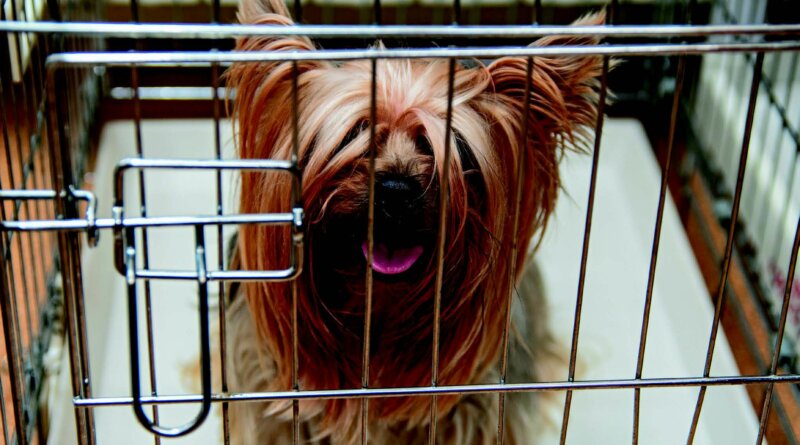Crate Training for All Ages – Dogster
Crate training is a popular way to help puppies hold themselves for periods of time and to keep them safe when unsupervised. Used correctly, a crate can be a good place for puppies and adult dogs to rest and sleep, but problems can occur if crates are used for extended periods of time, encouraging puppies to toilet where they sleep and adult dogs to become anxious from too much confinement. However, if the crate is used correctly, it can be a highly effective tool for housetraining and safety.
Crate Introductions
Some dogs take to their crates immediately, while others need time to acclimate. To ensure your puppy or adult dog sees the crate as a safe place to be, make it comfortable with soft bedding and toys, and leave the door open at first so your dog can come and go as she pleases. You can encourage her to go into the crate by throwing her favorite treat or chew inside it.
If your dog decides to settle and chew, allow her to do so without closing the door so she has the freedom to stay or leave. Once she is comfortable settling in the crate, close the door for a few seconds at a time, gradually building up duration. If your dog is comfortable with the crate door being shut, put space between you and the crate by gradually increasing the distance while your dog is settled. This process can take anywhere from a few hours to a few days, but don’t rush. Each time your dog goes into her crate, use words such as “go to bed,” which builds up a positive association between the cue words and the action of walking into the crate. Once your dog is comfortable being crated, the crate can be used in different situations such as keeping your dog safe while traveling in a car or preparing her for potential longer stays at the veterinarian.
Crate Must-Know Tips
Here are my top tips to making the crate a safe and comfortable place to be:
✤ Use appropriate bedding and safe toys to make the crate a safe, denlike space that your puppy or dog wants to go into.
✤ Leave the crate door open at times so your dog can investigate inside.
✤ Encourage your dog to go in the crate by putting her favorite treat or toy inside it.
✤ Do not close the door to the crate until your dog is comfortable and relaxed.
✤ Begin closing the door for a few seconds at a time, gradually building up the duration as long as your dog stays relaxed.
✤ Give your dog a durable rubber chew toy with some food inside it so she has an enriching activity to focus on while she is inside the crate.
✤ Gradually increase distance between yourself and the crate.
✤ Build a positive association by feeding your dog’s meals in the crate.
✤ Make sure your dog always has access to water while crated.

Here is my list of things you should never do with your dog and his crate.
✘ Never force your puppy or dog to go inside the crate.
✘ Never use the crate as a place of punishment when your dog misbehaves.
✘ Do not rush the crate-training process or your dog will build an aversion to it.
✘ Do not leave your puppy or adult dog in the crate for longer than she can hold herself. Doing so will force her to have accidents and make the house-training process a lot harder.
✘ Be aware that some puppies or dogs can become very anxious in confined spaces.
✘ The crate should never be used to confine puppies or dogs for long periods of time. Observe your dog’s body language to monitor her comfort level.
✘ Place a webcam in the room where your dog is crated so you can observe her behavior when you are out.
Crate training is a popular way of encouraging puppies to hold themselves for longer periods of time and keeps puppies and adult dogs safe when unsupervised. If you use the crate correctly, it will become a safe den-like space for your dog, as well as a highly effective toilet training tool for your puppy.

Gate, Don’t Crate
Dogs who have been diagnosed with separation anxiety do not do well in confined spaces, and crates should not be used before, during or after treatment. Dogs who have separation issues do better behind baby gates so that they have the freedom to move around, which lessens the panic they feel on separation.





Some are medicines that help people when doctors prescribe. Read here.
buy amoxicillin online mexico
Read information now. Commonly Used Drugs Charts.Amox
darknet seiten deep web sites